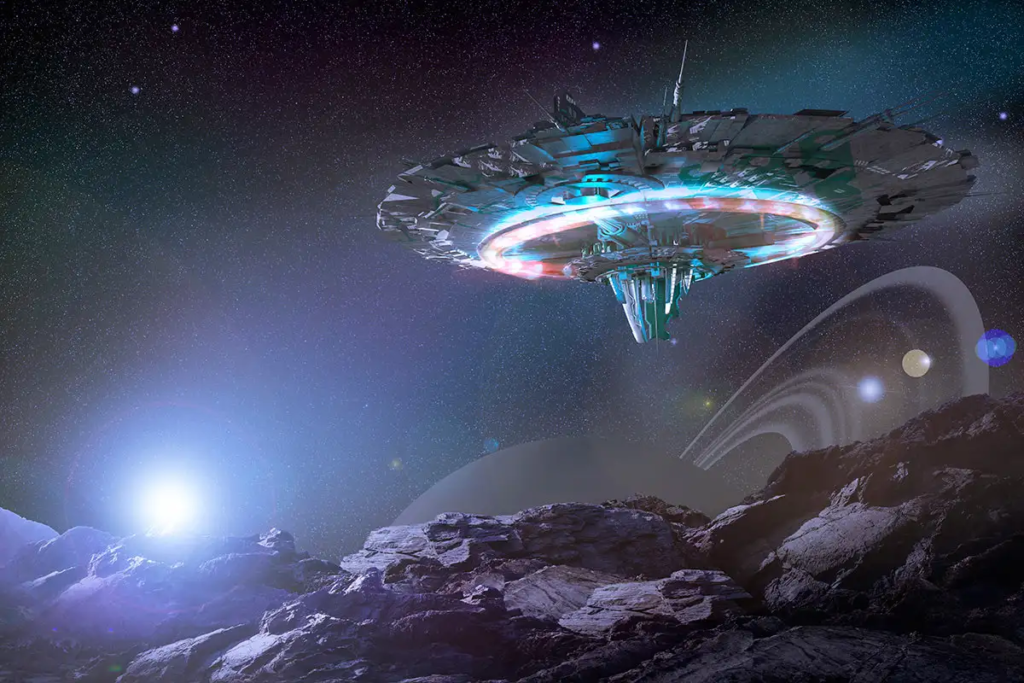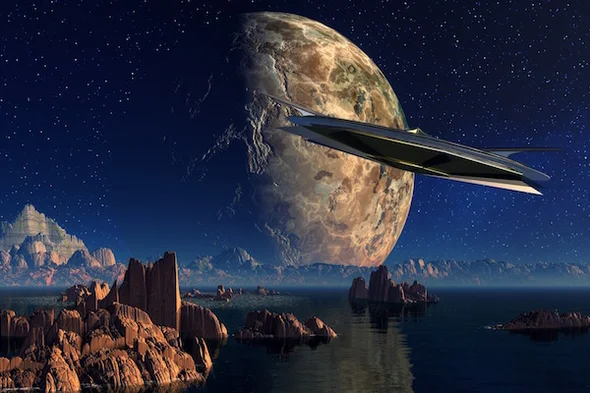The science behind Sci-Fi : Science fiction frequently exaggerates or distorts science for dramatic effect, but many films and television shows contain a kernel of realism at their core.
The science behind Sci-Fi : Introduction
The science behind Sci-Fi : The enduring appeal of science fiction, known for its creative portrayals of future scenarios, otherworldly adventures, and apocalyptic settings. Despite the genre’s tendency to bend scientific rules for entertainment, numerous films and TV series include realistic elements. The passage introduces an exploration into the perspectives of scientists examining the scientific aspects of iconic sci-fi franchises such as “The Last of Us,” “Jurassic Park,” and “Star Trek,” emphasizing the intersection between imaginative storytelling and genuine scientific concepts within these popular works.
ALSO READ : Sea Monsters Of The Deep : Unraveling The Intriguing Mysteries Of The 16th Century

Apocalyptic natural disasters
“The Day After Tomorrow,” a 2004 disaster film, may have exaggerated the consequences of a collapsed North Atlantic ocean circulation system, leading to a new ice age. Meteorologist Marshall Shepherd acknowledges the scientific flaws but points out the real concern of a potential shutdown of the oceanic conveyor belt due to human-induced climate change. The movie raises awareness about climate-related catastrophes, even if the depicted scenarios are sensationalized.

Dinosaurs return to earth
The “Jurassic Park” franchise has been both praised and criticized for its portrayal of dinosaurs. Paleontologist Gabriel-Phillips Santos notes the inaccuracies but appreciates the franchise’s ability to inspire interest in paleontology. Despite the oversized velociraptors and delayed introduction of feathered dinosaurs, the movies contribute to public engagement with science, encouraging people to explore natural history museums and learn more about prehistoric life.

Space travel
The “Star Trek” franchise serves as an inspiration for those interested in astronomy and space, seamlessly blending genuine scientific concepts with imaginative storytelling. Erin MacDonald, an astrophysicist and the science advisor for “Star Trek,” emphasizes the show’s unexpected scientific depth. Notably, the series delves into intricate ideas such as gravity’s influence on spacetime, offering a platform to elucidate complex scientific principles to a broad audience. Through this fusion of real science and creative narrative, “Star Trek” has become a guiding light, fostering curiosity and understanding among viewers passionate about the mysteries of space.

Global pandemics
“Contagion,” a 2011 bio-disaster thriller, consults with scientists to create a plausible depiction of a global pandemic. Epidemiologist Tara Smith commends the film for its accurate portrayal of virus transmission pathways similar to real-world zoonotic infections. Similarly, “The Last of Us” TV series draws attention to the link between climate change and infectious disease outbreaks, offering a scientifically rigorous perspective on a post-apocalyptic world.

The rise of artificial intelligence
Artificial intelligence (AI) researcher Janelle Shane expresses a longing for more realistic portrayals of AI in sci-fi narratives. While blockbuster films often depict sentient robots with human-like intelligence, Shane emphasizes that real-world AI is currently more limited. Despite this gap, recent sci-fi novels, such as Robin Sloan’s “Sourdough,” provide a more nuanced and realistic representation of AI, showcasing the challenges faced by AI developers in teaching machines to perform specific tasks.

Conclusion
While science fiction may take creative liberties with scientific concepts, it serves as a powerful tool for sparking interest in various scientific fields. The blend of imagination and real-world inspiration found in these movies and TV shows creates a bridge between entertainment and education, captivating audiences and inspiring the next generation of scientists and researchers. As technology advances and our understanding of the world grows, the relationship between science and sci-fi will continue to evolve, providing a fascinating intersection of fiction and reality.
To explore more news : Click Here
ALSO READ : Snowy Elegance: Discover the Enchanting Stories Of 7 Animals That Turn White In Winter




































